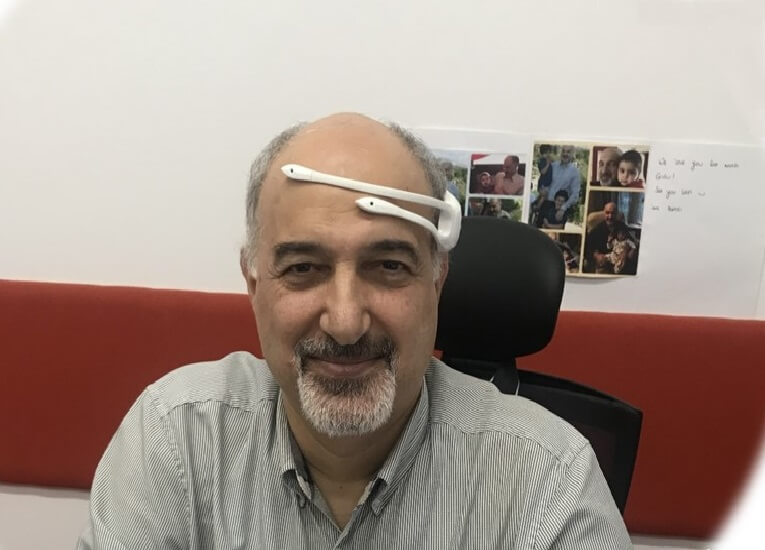
EBTIC Senior Design Project has won Best Lightning Presentation at the 11th Annual Undergraduate Research Conference on Applied Computing 2019
A student design project from Alanud Almemari, Safa Alkatheeri and Hamda Altamimi was awarded Best Lightning Presentation for their Brain Wave Control System Using Deep Learning. Supervised by Dr. Kin Poon, Dr. Gabriele Gianini and Dr. Nawaf Almoosa from EBTIC, the project was one of 15 presented to conference participants and a judging panel.
The students faced stiff competition against augmented reality projects, secure voting systems and medical platforms but ultimately won first place at the 11th Annual Undergraduate Research Conference on Applied Computing (URC) at Zayed University, Dubai.
The URC aims to provide a forum for undergraduate students to present their ideas and interact with other young researchers from educational institutions in the UAE, other GCC countries, and the rest of the Arab world, as well as expert faculty and leaders from the IT industry. The forum offers three types of submissions—live demonstration of a finished application, system or tool, lightning presentations in which students are given up to seven minutes to present their research projects, and poster presentations.
“I think our project stood out for the judges because using the brain to control the movements of a device can be so beneficial to someone with complete paralysis,” said Dr. Poon.
Paralysis is a serious medical condition threatening the livelihoods of approximately 5.4 million people around the world. For those suffering from full body paralysis, even controlling a wheelchair with a joystick is an impossible task to perform, severely limiting independence. The only way to overcome this is through Electroencephalogram (EEG) brain wave signals, which the students use to control a device’s movements based on deep learning techniques.
“Paralysis is a loss of muscle function and one of the ways to overcome such a problem is to make good use of the Electroencephalogram brain wave signal to control the movements of a wheelchair, for example,” explained Dr. Poon. “Our project has developed a prototype for controlling the movements of a toy car using EEG signals based on a deep learning technique.”
EEG represents the electrical activities of the brain and are captured when an individual starts thinking or physically moves a part of the body to perform a specific action. These signals can be extracted using an EEG headset comprising multiple dry electrodes. They are then analyzed using deep learning algorithms that consist of multi-layered Artificial Neural Networks (ANNs). In this project, the ANNs used are Convolutional Neural Network (CNNs), a class of neural networks often used in image recognition because of their excellent compatibility with the processing of image pixel data.

“Our project also stood out because deep learning is one of the hot topics in artificial intelligence research,” added Dr. Kin. “There are many successful applications such as data analysis and image recognition based on deep learning. To see how it can also be applied to recognize brain wave signals to perform certain tasks is a fascinating research area.”
The analysis involves converting the EEG signals into wavelets—frequencies which vary with time—which are then used to train the CNN. The computer distinguishes and learns the different commands intended by the signals as the person concentrates on thinking about moving a device to different locations. These commands are recorded multiple times until the CNN can use them to control the movements of a toy car in the testing prototype.
“For the time being, this prototype can only control some basic movements of a toy car,” said Dr. Poon. “We would like to extend the recognition engine to perform simple communication to express someone’s needs with paralysis.”
Jade Sterling
News and Features Writer
16 July 2019






